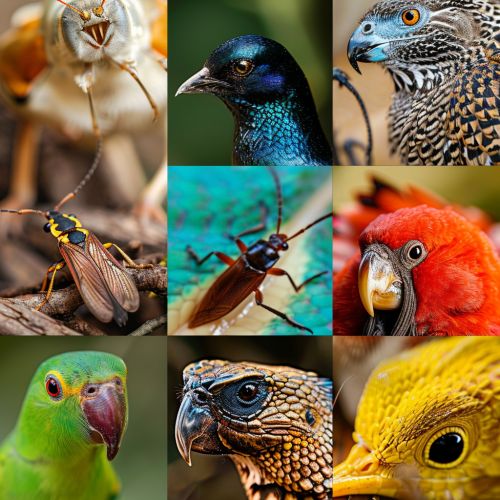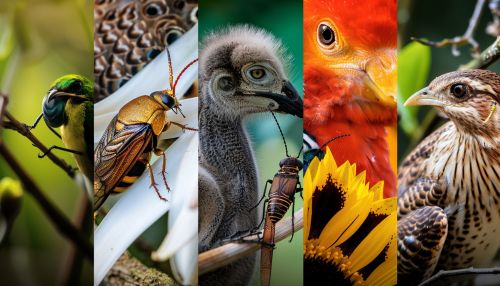Creatures
Introduction
Creatures, or organisms, are complex structures of interdependent and subordinate elements whose relations and properties are largely determined by their function in the whole. This term is usually associated with living entities that have agency or the capacity to act. The term "creature" may refer to humans, animals, plants, or microorganisms. The study of creatures is a multidisciplinary field that includes various branches of biology such as zoology, botany, and microbiology, among others.


Classification of Creatures
Creatures are classified into different categories based on their characteristics. The broadest level of classification is the domain, which groups creatures into three categories: Bacteria, Archaea, and Eukarya.
Domains
Bacteria and Archaea are prokaryotic creatures, meaning they lack a nucleus and other membrane-bound organelles. Eukarya, on the other hand, are eukaryotic creatures, which have a nucleus and other membrane-bound organela. Eukarya includes creatures such as fungi, plants, animals, and protists.
Kingdoms
Within the domain Eukarya, creatures are further divided into kingdoms. The most widely accepted system of classification includes five kingdoms: Monera, Protista, Fungi, Plantae, and Animalia.
Anatomy and Physiology of Creatures
The anatomy and physiology of creatures vary widely due to their diverse nature. However, all creatures share certain common characteristics.
Cellular Structure
All creatures are made up of cells, the basic unit of life. These cells may be unicellular, as in bacteria and some protists, or multicellular, as in plants, animals, and fungi.
Metabolism
Creatures have the ability to metabolize, or convert food into energy. They do this through various metabolic pathways, including glycolysis, the Krebs cycle, and oxidative phosphorylation.
Reproduction
All creatures have the ability to reproduce, either sexually or asexually. Sexual reproduction involves the fusion of two gametes, resulting in offspring that are genetically different from their parents. Asexual reproduction, on the other hand, results in offspring that are genetically identical to the parent organism.
Adaptations of Creatures
Creatures have evolved a wide range of adaptations to survive in their specific environments. These adaptations may be physical, such as the development of wings for flight in birds, or behavioral, such as the migration of monarch butterflies.
Impact of Creatures on the Environment
Creatures play a crucial role in maintaining the balance of the ecosystem. They contribute to biodiversity, nutrient cycling, and the regulation of climate.
Threats to Creatures
Many creatures face threats due to human activities such as habitat destruction, pollution, and climate change. These threats can lead to a decrease in biodiversity and the extinction of species.
Conservation of Creatures
Conservation efforts are crucial to protect creatures and their habitats. These efforts include the establishment of protected areas, the implementation of conservation laws, and the promotion of sustainable practices.
